Medical Student Research: An Integrated Mixed-Methods Systematic Review and Meta-Analysis
- PMID: 26086391
- PMCID: PMC4472353
- DOI: 10.1371/journal.pone.0127470
Medical Student Research: An Integrated Mixed-Methods Systematic Review and Meta-Analysis
Abstract
Importance: Despite the rapidly declining number of physician-investigators, there is no consistent structure within medical education so far for involving medical students in research.
Objective: To conduct an integrated mixed-methods systematic review and meta-analysis of published studies about medical students' participation in research, and to evaluate the evidence in order to guide policy decision-making regarding this issue.
Evidence review: We followed the PRISMA statement guidelines during the preparation of this review and meta-analysis. We searched various databases as well as the bibliographies of the included studies between March 2012 and September 2013. We identified all relevant quantitative and qualitative studies assessing the effect of medical student participation in research, without restrictions regarding study design or publication date. Prespecified outcome-specific quality criteria were used to judge the admission of each quantitative outcome into the meta-analysis. Initial screening of titles and abstracts resulted in the retrieval of 256 articles for full-text assessment. Eventually, 79 articles were included in our study, including eight qualitative studies. An integrated approach was used to combine quantitative and qualitative studies into a single synthesis. Once all included studies were identified, a data-driven thematic analysis was performed.
Findings and conclusions: Medical student participation in research is associated with improved short- and long- term scientific productivity, more informed career choices and improved knowledge about-, interest in- and attitudes towards research. Financial worries, gender, having a higher degree (MSc or PhD) before matriculation and perceived competitiveness of the residency of choice are among the factors that affect the engagement of medical students in research and/or their scientific productivity. Intercalated BSc degrees, mandatory graduation theses and curricular research components may help in standardizing research education during medical school.
Conflict of interest statement
Figures

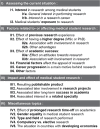
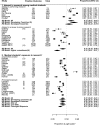
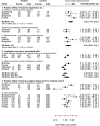


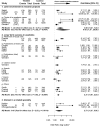
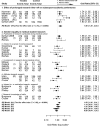

References
-
- Guelich JM, Singer BH, Castro MC, Rosenberg LE. A gender gap in the next generation of physician-scientists: medical student interest and participation in research. J Investig Med. 2002;50(6):412–8. - PubMed
-
- Rosenberg LE. Physician-Scientists—Endangered and Essential. Science. 1999;283(5400):331–2. - PubMed
-
- National Institute of General Medical Sciences: Medical Scientist Training Program [Internet]. Available: http://www.nigms.nih.gov/Training/InstPredoc/PredocOverview-MSTP.htm. Accessed 14 April 2015.
Publication types
MeSH terms
LinkOut - more resources
Full Text Sources
Other Literature Sources

